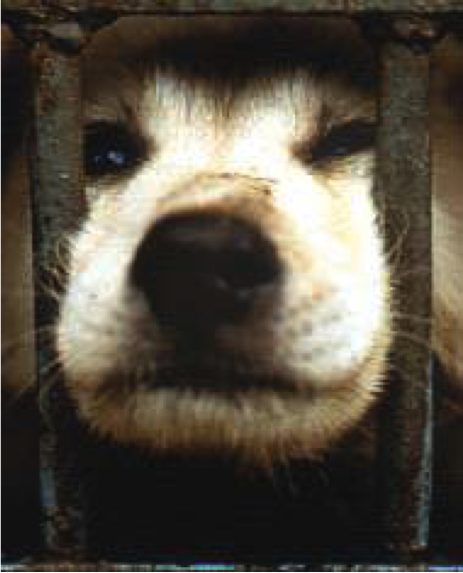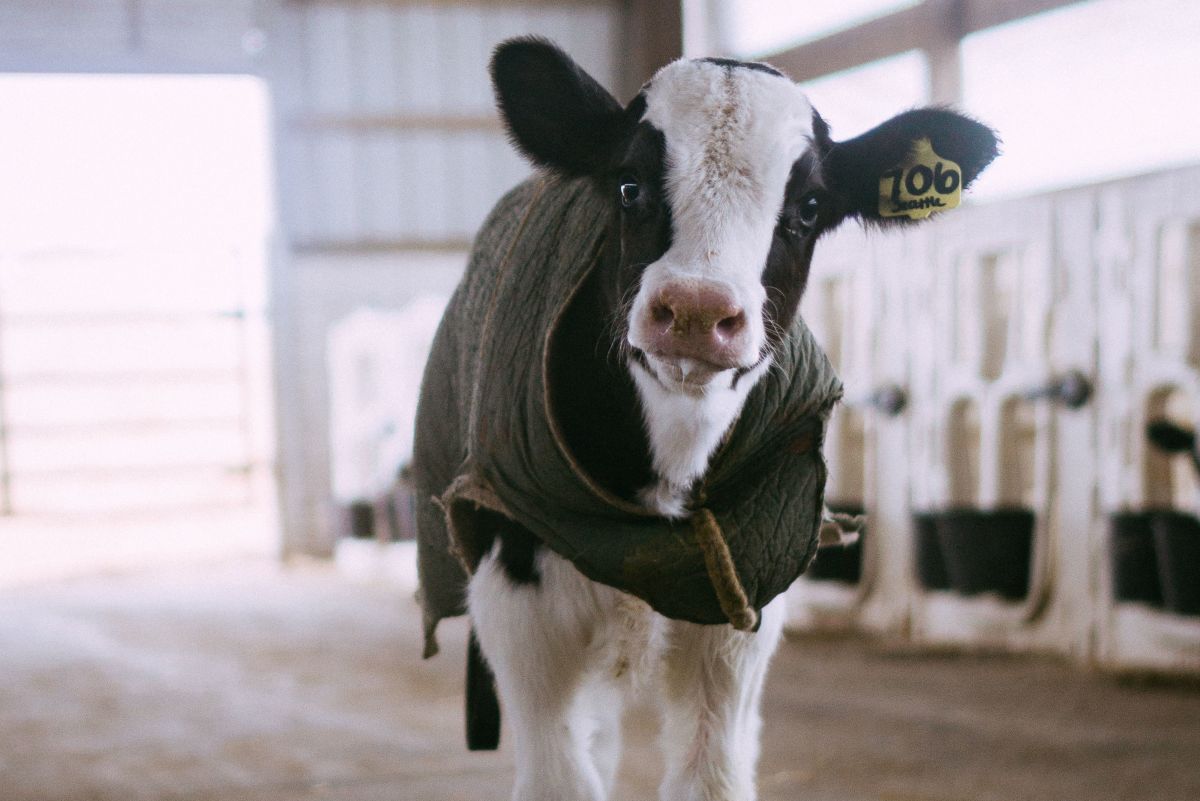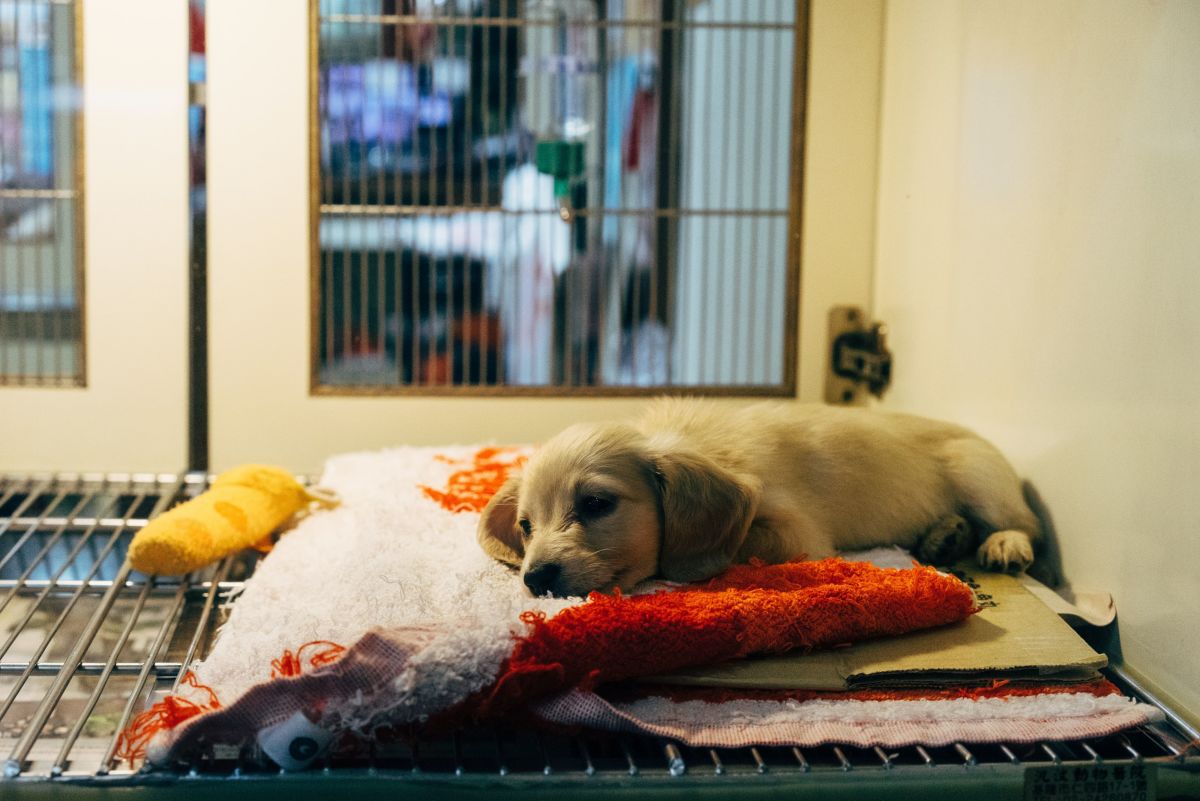How to save a life in 10 minutes : talking about puppy mills

Temple Grandin is a "must read" for animal lovers
Start the conversation:
It is estimated that 50% of the 6 to 8 million animals entering shelters every year are killed (HSUS Estimates, 2008). Among these millions of animals that sit on death row, there is a loving companion, a jogging partner, a child's playmate, a protector, a best friend, a puppy who likes running after balls and tugging on rope, a warm heart, and a wet nose. These precious lives are discarded every year, due to our action, and inaction, as a society.
Given the number of animals killed in this country, it is hard to believe that there are just as many animals being bred and pumped out of neglectful and inhumane puppy mills every year, for retail distribution. Pet owners in the United States own approximately 75 million dogs; 90% of these pet owners obtained their dog from a pet store or a breeder, instead of rescuing one from a shelter (HSUS Ownership Statistics, 2008). These animals are being sold without being spayed or neutered, thereby increasing the number of animals competing for homes in this country, and increasing the number of euthanized animals in shelters.
Laws and regulations protecting these animals are weak to non-existent. The financial and emotional burden the surplus of companion animals creates is absorbed by municipal animal shelters, and private rescues and sanctuaries relying solely on donations and volunteers (Animals and Society, 2006). From 1988 to 2005, the number of animals being kept as pets in the United States has increased by 6%, thereby increasing the need for puppy mills and breeders, increasing the amount of animals that go unspayed and unneutered, increasing the amount of surplus animals being left neglected and abandoned, and ultimately increasing the amount of animals killed in animal shelters (Animals in Society, 2006). It is a vicious cycle of ignorance bringing about profit to those committing crimes of inhumanity, and increasing numbers of animals with no homes.
As long as society continues to ignore the need to support humane policies and regulations, there will never be a voice for these animals. As long as pet breeders and pet owners leave their animals unspayed or unneutered for self indulgent rationales, the amount of abandoned animals will grow. As long as people continue to purchase dogs from pet stores, newspapers, and internet breeders, millions of dogs will suffer in puppy mills and shelters every year. Every member in society can play a role in helping to save our animals.
What is a Puppy Mill?
The term puppy mill cannot be found in a dictionary. In the legal world, there is no definition for the name. This lack of recognition in mainstream society may be partly responsible for the millions of Americans who have no idea where the cute puppy in the pet store window came from. This is why the mother who brought a puppy home for her children on Christmas morning, doesn’t know that the five hundred dollars she spent at the pet store is supporting an inhumane industry, she never knew existed.
The American Society for the Prevention of Cruelty to Animals (ASPCA) defines a puppy mill as “a large-scale commercial dog breeding operation where profit is given priority over the well-being of the dogs” (What is a Puppy Mill, 2009). For maximum profit, the females used in these facilities as breeding stock are often impregnated constantly, with no recovery time given in between litters. With this physical burden on the animal, they are often depleted of any breeding use after only a few years, and are usually killed, sometimes abandoned (What is a Puppy Mill, 2009). Inside these puppy mills exists a world of neglect, cruelty, and sadness.
In 2002, the Humane Society rescued 77 dogs from a puppy mill in Arkansas. The puppy mill had been operating for 10 years, and was discovered when a potential buyer of one of the puppies came to visit the facility and reported what they saw to the local Humane Society. One of the rescuers noticed, “Some animals were missing toes or had chewed ears, and one needed emergency surgery to remove gangrene.” She also observed, “The dogs were being kept in outdoor concrete runs and in cages hanging from the ceiling of an unheated cinder-block building…Inside, urine and feces made the air unbearable, and the animals’ drinking water was green” (Humane Society Rescues Dogs, 2002, p 16).
In another rescue carried out by the Humane Society in 2008, 110 dogs were confiscated from a Canadian puppy mill (selling puppies to U.S. buyers). An article on the Humane Society website described what they found: “The dogs, ranging from Boston Terriers to French Mastiffs, were living in piles of their own feces, and many were suffering from obvious medical conditions such as open sores and severe skin conditions. Skeletal remains were found still locked in cages inside the home, and a pile of burned animal remains was found in the rear of the property (“Canadian Puppy Mill,” 2008).
The people who run these puppy mills do not see living beings in the cages they keep, but objects kept for profit. A man working at one puppy mill raided in Virginia in 2007 said, “The way I see it, they came here and stole all our puppies. My boss is losing about $450,000 worth of dogs. I don't see how they can do something like this - take his dogs away when he bought them and paid for them” (Puppy Mill Emergency, 2007).
Not surprisingly, the lack of care and neglect experienced by the puppy mill dogs leads to a recognized list of common health problems, for those that are sold to pet-stores or direct buyers. Medical conditions such as heart disease, epilepsy, kidney disease, musculoskeletal disorder, endocrine disorders, blood disorders and deafness are just some of the issues these dogs face once leaving a puppy mill (What Is a Puppy Mill, 2009). The tragic stories carried by each dog imprisoned in these breeding factories are ones hard to believe are kept so quiet.
The Humane Society’s website dedicated to ending the plight of these animals (www.stoppuppymills.com) tells stories of the survivors of puppy mills, and of those that never made it to a loving home. One story told is that of a 12 year old Chihuahua, Millie. Millie was found wandering a road in Virginia. “Her uterus had prolapsed due to multiple pregnancies and deliveries, and was literally protruding outside her body.” The animal shelter she was brought to identified her as a puppy mill breeding dog from the USDA license tag she was wearing. It was obvious that Millie’s condition was due to being impregnated continuously for 12 years at the breeding facility. Millie was brought in for emergency uterine surgery. During the operation, tumors were found spread throughout her reproductive organs. The operating doctor decided the most humane thing to do, was not to wake Millie up from surgery. The manager of the animal shelter brought Millie’s ashes home. “At least in death, Millie will have a real home” (Survivor Stories, 2009).
Public Policy and Regulations: No Support = No Chance
Public support of new legislation is crucial for change in government laws and regulations. There is only one federal law in the United States that regulates the treatment of animals by society in almost any capacity (Animal Welfare Act, 2007). The Animal Welfare Act, was signed into law in 1966. The law sets out the minimum standards of care and treatment to be provided for animals bred and sold to pet stores and the public. It is enforced by a sector of the United States Department of Agriculture named the Animal and Plant Health Inspection Service (APHIS).
There are three main problems that exist in the Animal Welfare Act, that allow commercial breeders to keep animals in such deplorable conditions. The first, being that in the law itself, often times standards and requirements are left undefined, such as “physical environment adequate to promote the psychological well-being of [the animal]” (Animal Welfare Act, 2007). These standards are then left up to each individual inspector to determine (PETA Factsheet). Another problem is the insufficient amount of inspectors to cover the country’s facilities needing monitored. According to the USDA, out of 8,300 facilities nationwide, there are approximately 70 inspectors to regulate animal care (USDA Compliance Report and Animal Inspections). Lastly, there is a loophole that exists in the Animal Welfare Act, which allows many puppy mills across the country to go completely unregulated by the USDA. That loophole is that only commercial breeders selling animals to pet stores are required to abide by the minimum standards of care set forth by the Animal Welfare Act.
Large commercial breeders that sell puppies online and directly to the public, do not need to be licensed, regulated, or inspected (Fed Lawmakers Bill, 2008). Attempting to take these additional facilities into account, the current USDA inspectors would have no way to regulate all of the breeding facilities in the country. There has recently been a statute introduced into legislation to attempt to close this loophole, called the “Puppy Uniform Protection Statute (PUPS).” In order for the statute to pass, constituents need to make their congressperson and senators aware of the importance this legislation has in the community. There are other suggested bills and legislation waiting for more exposure and support. Without the education of the public, leading to public support, there will be no legal protection for the victims of puppy mills, and no justice served for those committing these horrible crimes of cruelty.
Shelters, Rescues, and Sanctuaries: Home of the Forgotten
Millions of animals enter animal shelters every year. There is absolutely no logical, moral, or ethical reason to purchase an animal and support cruelty and neglect for profit, when so many animals are euthanized in shelters every year. Although there is no rational reason to believe a purebred dog is any better a pet or companion than a mixed breed dog (often the opposite), there are thousands of breed specific rescues throughout the country (www.petfinder.com). In addition, purebred dogs make up approximately 20% of the dogs in shelters today (HSUS Stat). By adopting an animal from a shelter, and paying a modest adoption fee, money can go to the rescue and support of animals needing help, rather than supporting the cruel industry of retail animal sales.
Education: One Person at a Time
The people of this country are a compassionate and caring society. It is a society that will rush to the aid of so many in need, donating money and time to help those less fortunate. It is primarily due to a lack of awareness that so many animals in this country suffer. Millions of healthy, loving companions in animal shelters, and only 20% of all pet owners choose to rescue a dog from a shelter, rather than buy an animal from a pet store or puppy mill (Companion Animals in society).
The main reason these puppy mills profit and survive, is because people do not know they exist. By educating society as to the existence of puppy mills, and where the puppy mills distribute their animals, we can help end the tragic lives so many of these animals face. All it takes is the education of ourselves and our neighbors, friends and family. It costs us nothing to do, and yet it could save so many animals from cruelty and death. Just by doing simple things, like starting a conversation with a friend interested in getting a dog, or sending an email out to a group of friends and family, with a link to information about what these animals are going through, could prevent so much abuse, and assist in spreading awareness. As a moral and respectful society, we must educate ourselves about the things going on around us, and learn how to make a positive change in the world we live in.
The prominent political and spiritual leader Mohandas Gandhi once said “The greatness of a nation and its moral progress can be judged by the way its animals are treated.” I wonder how our nations’ greatness, how our nations progress, would be measured. Our nation has created a surplus of neglected animals, due to greed and ignorance; a retail pet trade that is sustained with cruelty, neglect, and our own purchasing power and actions as a society.
Just as we must take responsibility for all of the fallacies we have created through negligence, unsuccessful public policy, and absent resources, we must take action to shut down the inhumane industry we unknowingly support. We have created the world these animals live in, and we are their only hope to escape it. There are so many problems we attempt to tackle as a society that can feel so out of reach; by supporting appropriate legislation and policy, pledging not to buy an animal from a pet store or a breeder, and educating those around us, we can help eliminate the surplus of suffering animals in this country.
There is not one member of our society that can say they are unable to do at least one thing to help save these animals. As our beloved pets and family members, as our best friends, as our protectors, they would never turn their backs on us. With millions of healthy animals being killed in shelters every year, there is simply no reason for animals to be bred for trade. If we can eliminate the financial incentive for puppy mills to operate in this country, we can end the needless and inhumane suffering and death that so many animals are subjected to in this country.
For more information on puppy mills and how to help:
Other Hubs to read about Puppy Mills
Puppy Mill Raid 2009
References
(October 2, 2008). Canadian Puppy Mill Animals Transported to Maryland. Retrieved May 5, 2009, from Humane Society of the United States Website HSUS Website
Humane Society Takes 77 Dogs From Owner; Missing Toes, Ears Chewed. (12/20/02). Arkansas Democrat-Gazette , p 16.
(November 11, 2007). Puppy Mill "Emergency" in Virginia. Retrieved May 5, 2009, from WJLA ABC Channel 7 News Virginia
Dog Whisperer, Inside Puppy Mills. Retrieved May 5, 2009, from National Geographic Web site: http://channel.nationalgeographic.com/series/dog-whisperer/3736/Overview02#tab-about-puppy-mills
(January 6, 2009). Survivor Stories. Retrieved May 6, 2009, from Humane Sociey, Stop Puppy Mills Web site: HSUS
ASPCA What Is a Puppy Mill http://www.aspca.org/fight-animal-cruelty/puppy-mills/
Animals and Society Companion Animals Position Paper 8/18/06 http://www.animalsandsociety.org/resources/details.php?id=14
HSUS Pet Overpopulation Estimates July 7, 2008 HSUS Website
HSUS U.S. Pet Ownership Statistics March 17, 2008 HSUS Website
Animal Welfare Act Factsheet APHIS http://www.aphis.usda.gov/publications/animal_welfare/content/printable_version/fs_awawact.pdf
U.S. Department of Agriculture, Animal and Plant Health Inspection Service, “Animal Care Report,” (Riverdale: U.S. Department of Agriculture, 2004).
U.S. Department of Agriculture, Animal and Plant Health Inspection Service, “Compliance Inspections,” (Riverdale: U.S. Department of Agriculture, Jun. 2005).
U.S. Department of Agriculture, Animal Welfare Act, Title 7, Chapter 54, Section 2143, January 3, 2007
U.S. Department of Agriculture, Animal Welfare Act Factsheet, January 2002. Animal and Plant Health Inspection Service
HSUS Press Release, Federal Lawmakers Introduc Bill to Crackdown on Abusive Puppy Mills, September 19th, 2008











